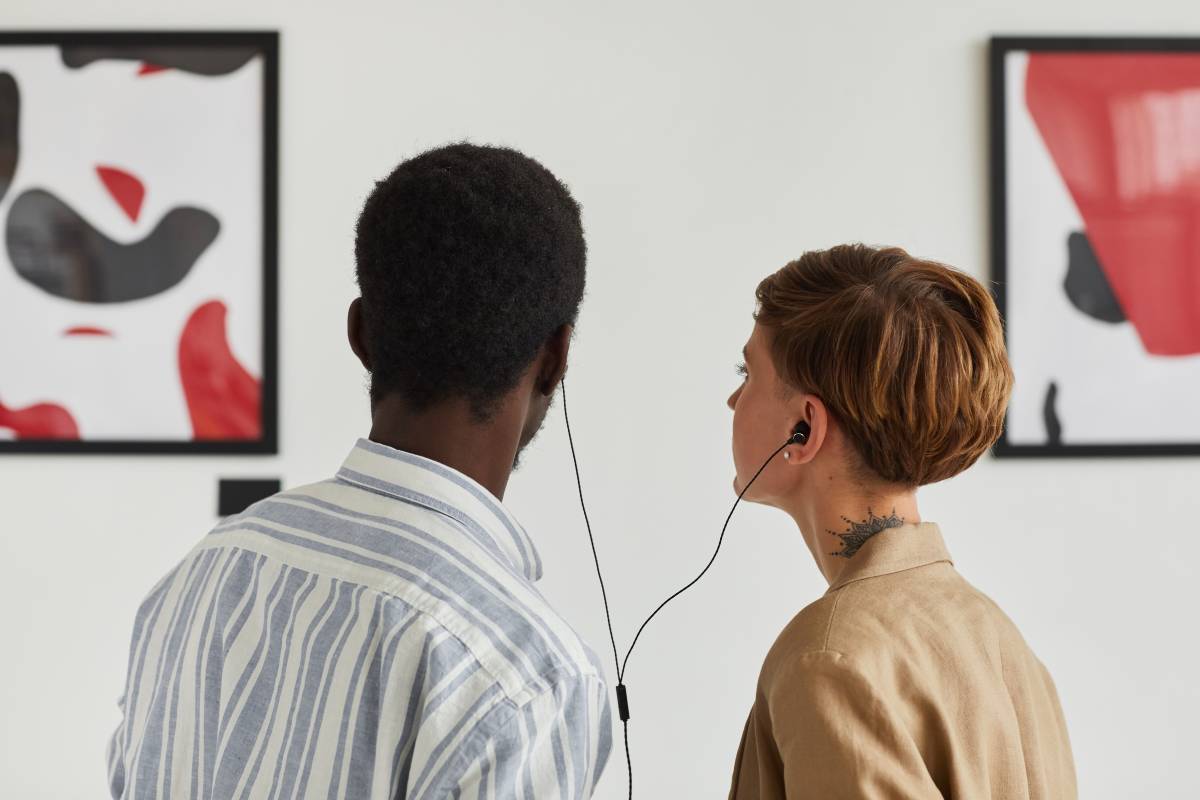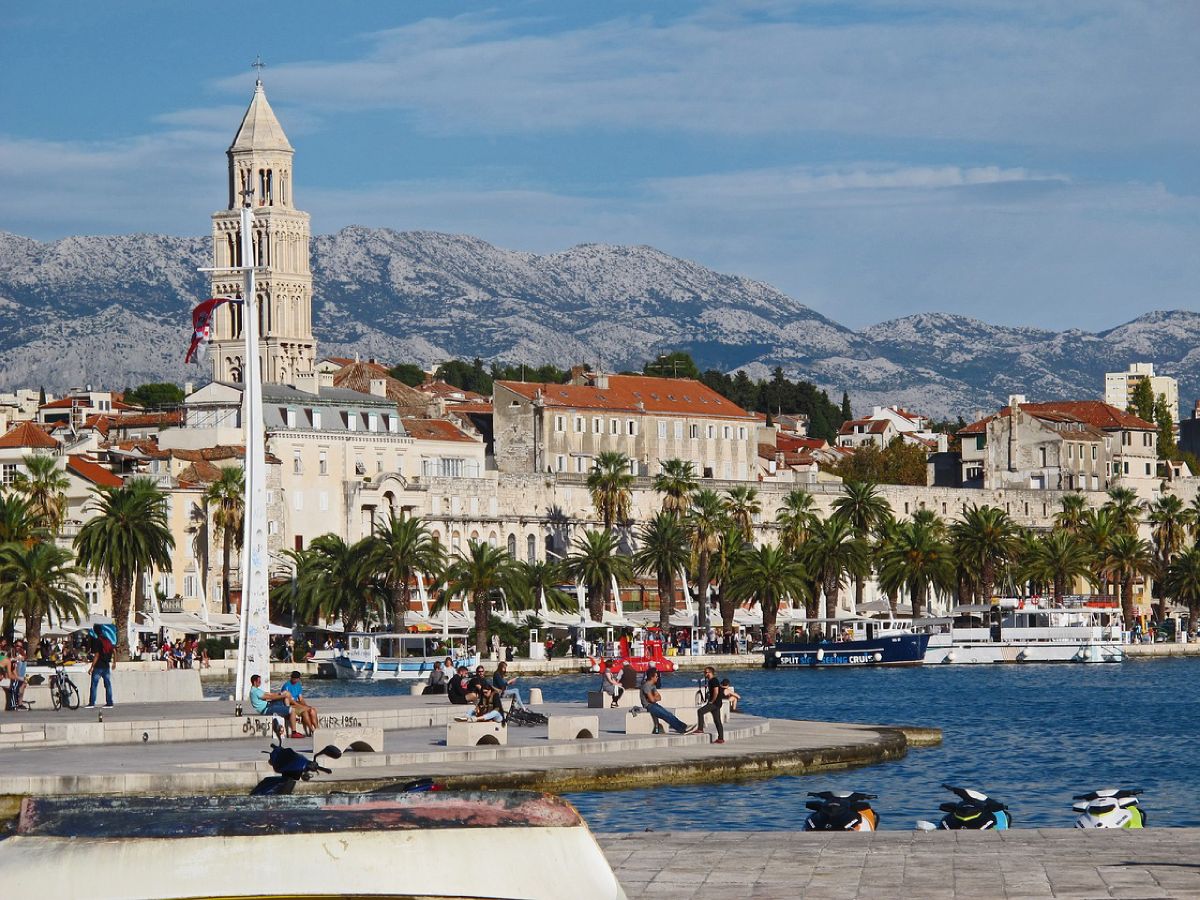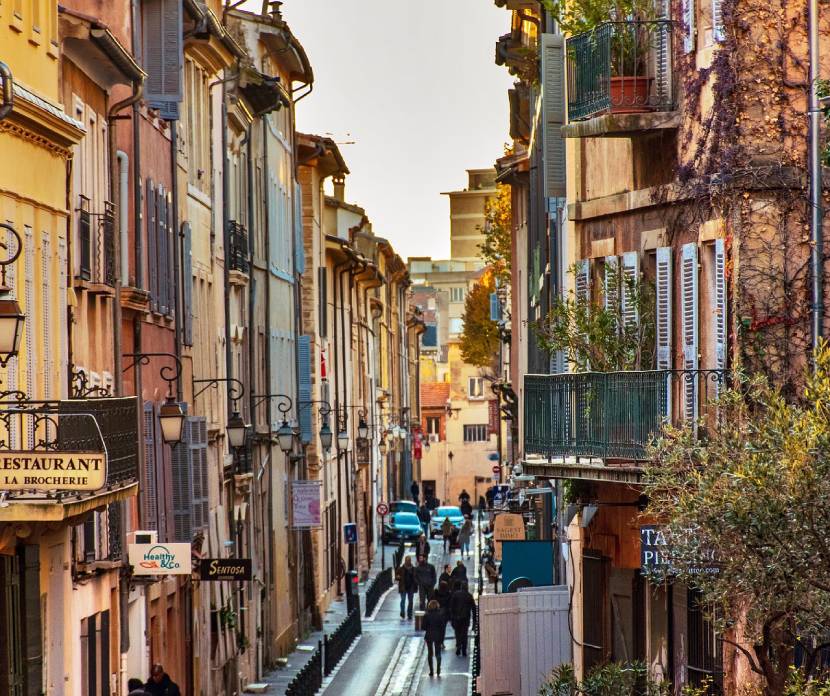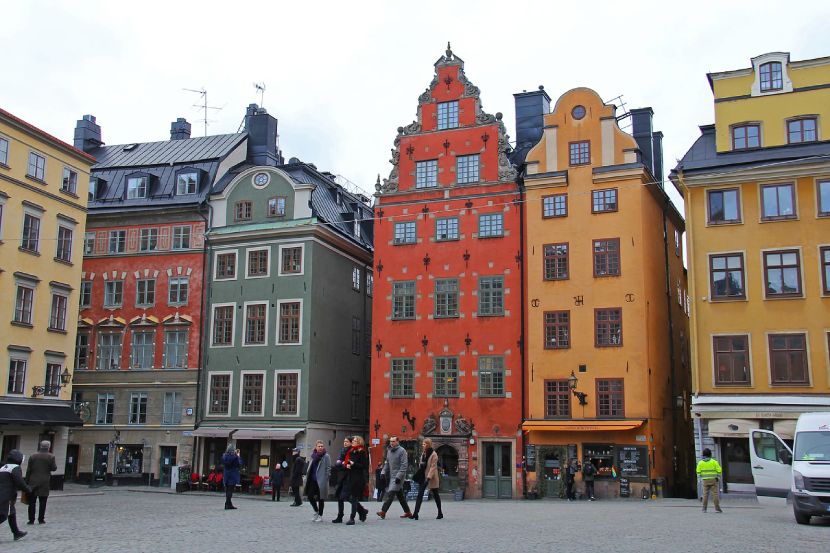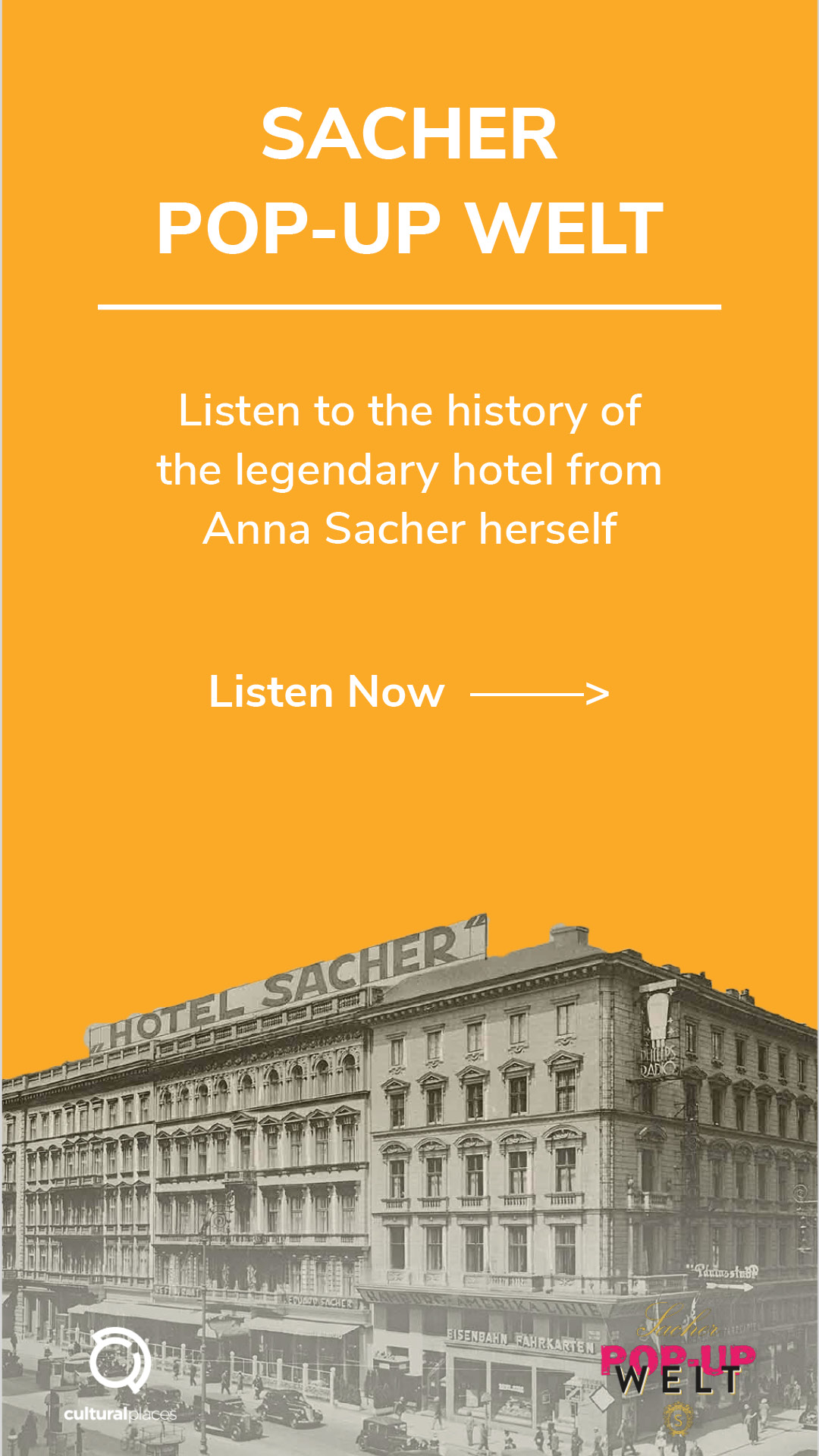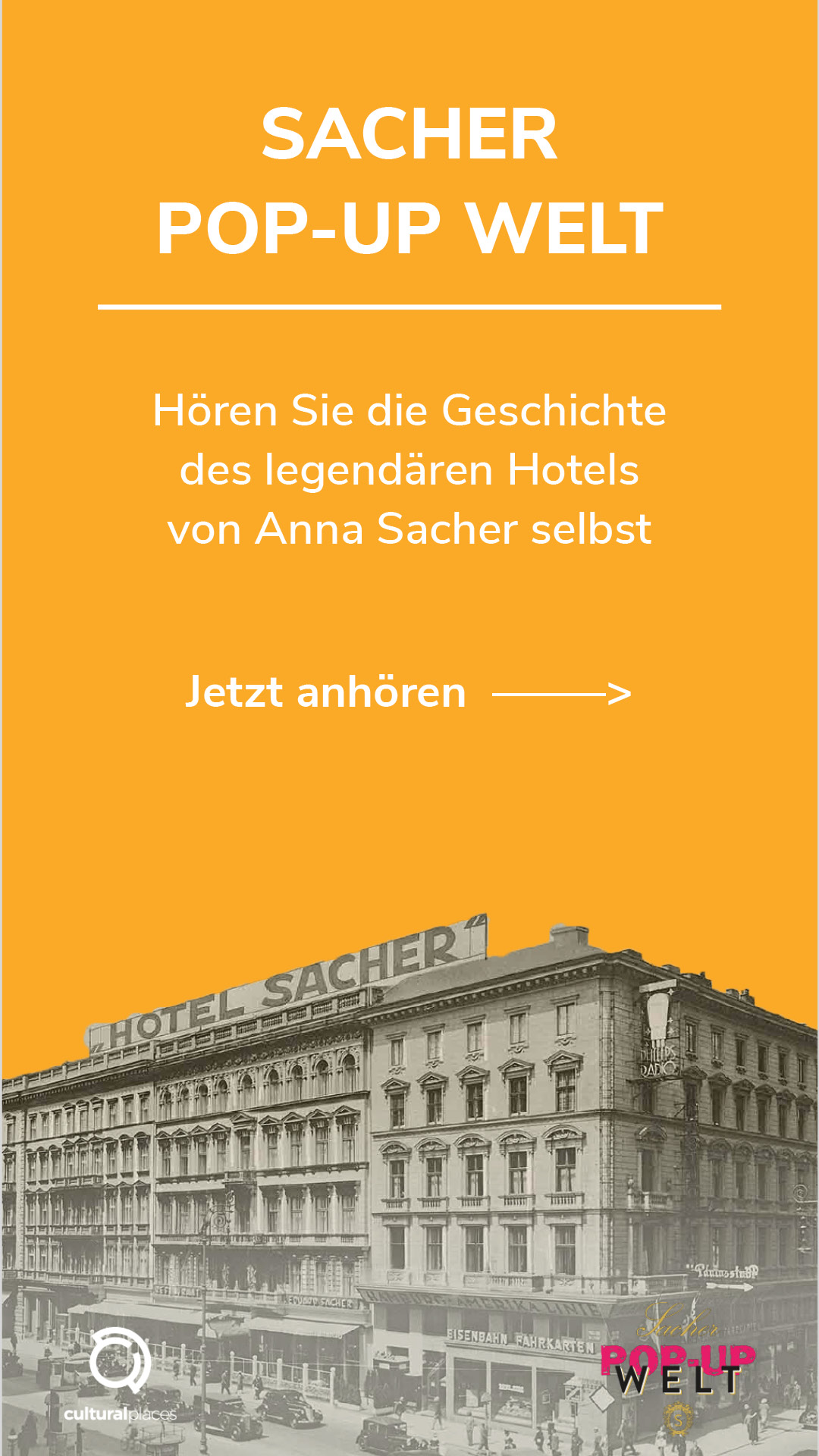Hear that? Digital Audio Formats in the Field of Art and Culture
Art and culture can be discussed in a myriad of different ways: in live guided tours, in an audio guide, in discussions, previews, and podcasts – of course in private conversations as well. This week we focus on two audio formats for digital offerings: audio guides and podcasts.
BYOD and Digital Audio Guides
When it comes to audio formats in the arts and culture sector, most people will think of audio guides first: you enter a museum and are provided with a device and headphones; you listen to explanations and background information. But the use of these audio guide devices seems a bit outdated, especially since the beginning of the corona pandemic. They not only have to be serviced, but also thoroughly disinfected regularly. A contemporary alternative are audio guides that can be used on visitors’ smartphones, be it via an app, a progressive web app, or a website – this is also referred to as BYOD, Bring Your Own Device. This option also allows for working with visual content that additionally complements the spoken word or puts it in context.
Another essential argument in favor of using smartphones is accessibility. Digital formats that work on visitors’ phones can be a massive relief for people with disabilities, as they are already familiar with their own devices. For visually impaired people, auditory assistance or information can make a visit to a museum easier, or even possible in the first place. In a small survey by “VisualEye,” most of those questioned reported that digital audio offers have an advantage for them and that they benefit from online events.
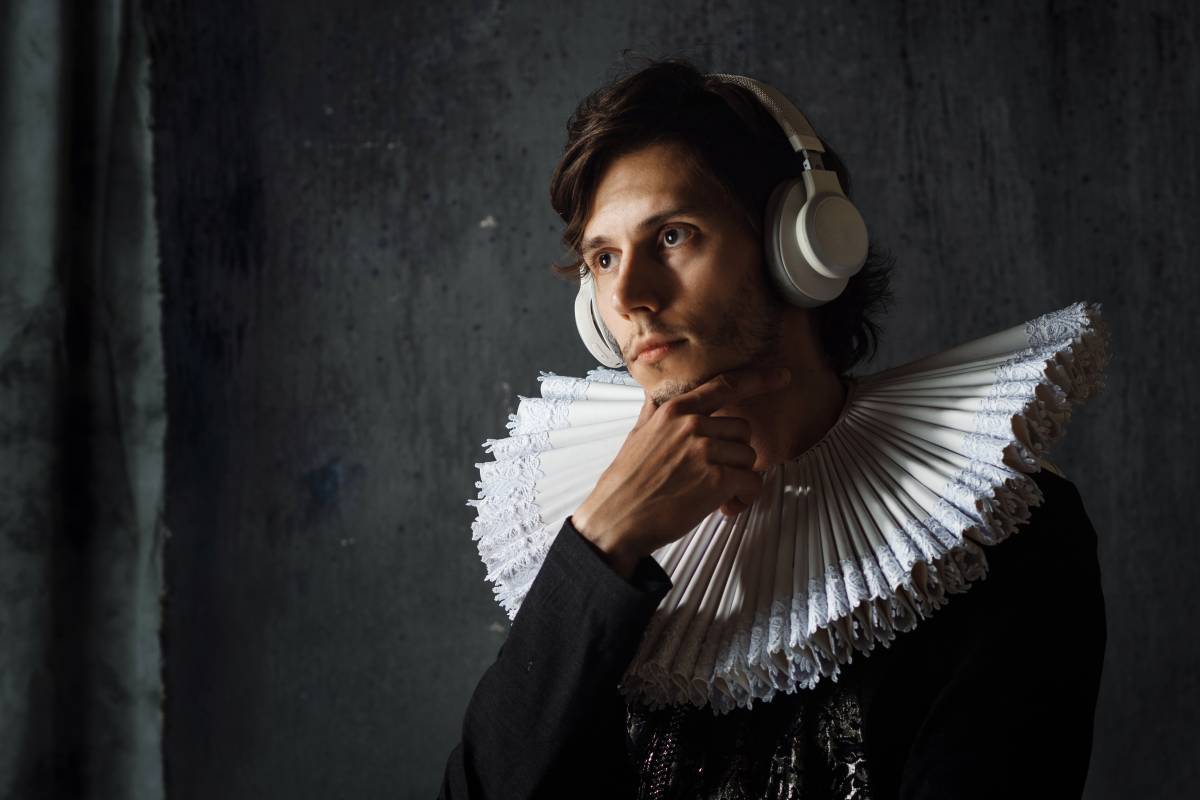
Digitalization plays an important role in the art and culture sector
Museum Apps und Digital Audio Guides
The use of smartphones and app downloads is increasing from year to year – according to Statista, app downloads increased by almost 50 % to 218 trillion between 2016 and 2020. This development does not stop at the art and culture sector and was clearly accelerated by the pandemic: More and more museums and exhibition houses are expanding their digital offers. If you are interested in how museums use the digital space, read our first blogpost on digitalization and museums.
A popular format are digital audio guides that work via app downloads or websites. Some museums have their own in-house app, but programming and designing their own app or their own digital audio guide system does not make sense for many cultural organizations – external providers are the best way to manage their content digitally. We at Cultural Places offer various options, from adapting existing content to complete production. We have produced various digital guides with and for several cultural organizations, e. g. St. Stephen’s Cathedral, the Hotel Sacher Wien, the Secession, and the Angerlehner Museum.
Cultural Communication via Podcast
The hype around podcasts may have peaked, but they are still prevalent. The arts and culture sector can benefit from this audio format: speaking about art, focusing on the spoken word, and taking the time to dig deep can lead to great results. The prerequisite for this is a suitable concept that conveys the content to the audience in an interesting way and offers added value. To put it a bit pointedly: dry frontal lectures by experts are unlikely to draw someone out of the woodwork. An exciting example of a podcast that manages to inspire with exciting and often unusual topics is “Sidedoor” from the Smithsonian Institute, which went on air in October 2016 and covers a broad spectrum.
Our in-house podcast “Culture Talks” (only available in German) goes in a slightly different direction. We regularly talk to guests from the fields of art, culture, and tourism about innovations in cultural tourism, how organizations deal with digitalization and its effects on culture, and about challenges and solutions. For example, the director of the Freud Museum, Peter Nömeier, spoke about what it’s like to open a museum during a pandemic. Andreas Bardeau from Schloss Kornberg talked about his experiences with crowdfunding, and Elisabeth Gürtler provided a look behind the scenes of institutions such as the Hotel Sacher and the Astoria Resort. In the most recent episode from October, Axel Stockburger, board member of the Vienna Secession, discussed digital formats such as TikTok, the power of the auditory, and explained how a 13-person board of directors makes decisions. In addition to our own podcast series, we also offer workshops for cultural organizations who want to start their own podcasts or take on the entire conception and implementation of podcasts in consultation with the cultural organizations.

Digital audio formats will become more important in the future
Listening in the Future – Digital Audio Formats as an Opportunity
In our podcast, Axel Stockburger mentions that an excess of visual information has arisen since the beginning of the corona crisis (e.g. through working with streaming providers such as Zoom), and he sees that “listening has come to the fore.”
How will art and culture communication develop, which (digital) formats will prevail, and which will lose their importance? The pandemic has undoubtedly accelerated the development and expansion of the digital in arts and culture, and the future will tell what will last and what will quickly be replaced by the “real” experience on-site. Because on the one hand, there is a hunger for physical, direct contact, and on the other hand, many digital, decentralized offers have been happily welcomed and are here to stay.

